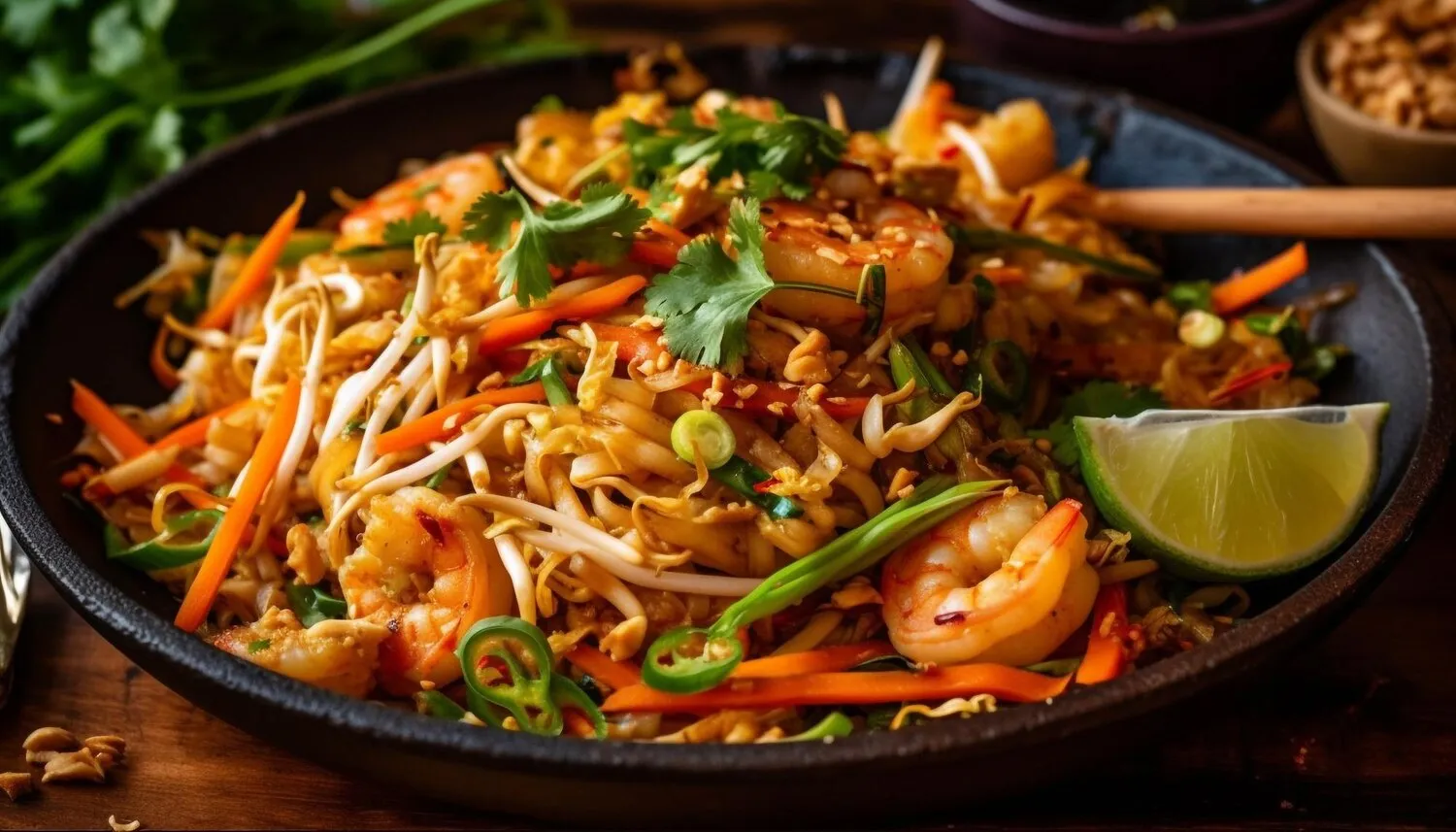
Drunken Noodles (Pad Kee Mao)
Wide rice noodles stir-fried with chili, basil, vegetables, and your choice of protein.
Nutrition Facts
* The % Daily Value (DV) tells you how much a nutrient in a serving of food contributes to a daily diet. 2,000 calories a day is used for general nutrition advice.
Pad Kee Mao, or Drunken Noodles, is a relatively modern Thai dish. Its exact origins are somewhat shrouded in mystery, but it's generally believed to have emerged as a creative adaptation of other noodle dishes, possibly influenced by Chinese stir-fry techniques adapted to local Thai ingredients and preferences. The 'drunken' aspect likely refers to its popularity as a late-night snack or hangover cure, or possibly the fact that it's so delicious you might feel 'drunk' after eating it, or because it is thought to be created by someone who was drunk.
Pad Kee Mao is a popular street food and restaurant staple in Thailand, often enjoyed as a quick and satisfying meal. It reflects the Thai appreciation for bold flavors and the adaptability of Thai cuisine.
Street Food Culture
Pad Kee Mao is widely available from street vendors throughout Thailand, reflecting the vibrant street food culture. It's typically made to order, allowing for customization of spice level and ingredients.
Late-Night Snack
Its reputation as a 'drunken' dish contributes to its popularity as a late-night snack, often consumed after socializing or as a remedy for hangovers.
Adaptability
The dish is highly adaptable, with variations in ingredients and spice levels depending on regional preferences and personal tastes. It showcases the Thai culinary tradition of using fresh, local ingredients and adjusting flavors to create a harmonious balance.
Drunken Noodles boast a bold and complex flavor profile, characterized by a balance of spicy, savory, sweet, and herbaceous notes.
The dominant flavor is undoubtedly the fiery heat from the chilies, often bird's eye chilies, providing a significant kick. Savory elements come from soy sauce (both light and dark), fish sauce, and oyster sauce (optional), contributing umami depth. A touch of sweetness balances the heat and saltiness, often achieved with sugar or palm sugar. Fresh Thai basil is crucial, adding a distinct anise-like aroma and flavor. Other ingredients, such as garlic and ginger, contribute aromatic complexity. The wide rice noodles provide a chewy texture that absorbs the sauce well, while the vegetables (tomatoes, bell peppers, onions) offer contrasting textures and subtle flavors. Protein like chicken, pork, beef, or tofu adds another dimension of flavor and substance.
High Heat is Key
Stir-frying the noodles over high heat is crucial for achieving the characteristic smoky flavor (wok hei). Use a wok or a large skillet that can retain heat well.
Fresh Ingredients Matter
Using fresh ingredients, particularly Thai basil and chilies, will significantly enhance the flavor of the dish.
Balance the Flavors
Adjust the amount of chili, sugar, fish sauce, and soy sauce to achieve a balance of spicy, sweet, salty, and savory flavors that suits your preference. Taste and adjust as you cook.
Don't Overcook the Noodles
Be careful not to overcook the noodles. They should be tender but still have a slight chew.
Explore additional Noodles dishes and restaurants
Explore NoodlesDiscover top dining spots and culinary experiences in Hillsborough.
Explore HillsboroughLearn more about the food culture, restaurant scene, and culinary heritage of United States.
Explore United States